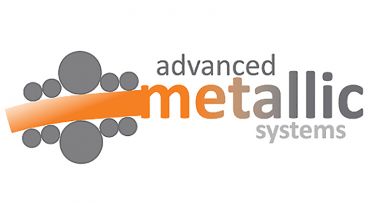Advancing Gear Oil Insights - Tribofilm and Subsurface Failures Focusing on Different Chemical Additive Based Lubricant Chemistries
How various chemical additive-based lubricants affect the performance of gear box components, particularly roller bearings, in diverse tribological environments

This case study primarily focused on the hardened AISI 52100 steels used as bearing material due to the increasing prevalence of bearing failures within wind turbine gear boxes. The most important factor influencing the lifespan of wind turbine bearings is gear oils, which are specifically made to provide lubrication and may reduce heat and friction generation while enhancing gear performance. The current case study investigates how the performance of the bearing steel contact surface and the subsurface alterations that take place during reciprocating-sliding circumstances are affected by the anti-wear additive-based gear lubricants.
As the need for energy throughout the world increases and there is a push to use renewable energy sources instead of fossil fuels, wind power has grown in popularity in recent decades. Wind Turbine bearing assemblies usually consist of oil-lubricated ball or roller bearings, and it is evident that bearing failures drastically reduce the gear box's lifespan. The solution is to figure out how to look at the correlation between subsurface failures and additives under conditions of severe loading in turbine bearings. Subsurface failures can be seen in the form of white etching cracks, areas and voids.
The methodology used in this case study is to generate wear samples using a high frequency reciprocating rig (HFRR) by PCS instruments and is funded by BP Castrol Limited, who supply the lubricants. A range of characterisation techniques have been used to quantify the changes that occurred on the surface of the tribotested steel specimen. These techniques include optical microscopy, scanning electron microscopy equipped with energy dispersive x-ray technique, Raman spectroscopy, atomic force microscopy-equipped with nano infrared technique, and x-ray photoelectron spectroscopy. For the first time, X-ray computed tomography, a non-destructive method, is used to view the steel specimen's internal features. To characterise the subsurface, cutting-edge methods like the electron backscatter diffraction method and nano indentation have also been implemented.
Understanding the subtle interactions within a wind turbine gearbox is like deciphering the language of the wind itself—small insights into lubrication and wear can prevent monumental failures and keep sustainable energy spinning. Working alongside an incredible cohort in my PhD journey, I've learned that solving complex wind turbine failures isn’t just about mastering tribology and mechanics—it’s about the power of collaboration, shared insights, and the supportive environment that drives innovation forward
Ashutosh Gupta
The study of wind turbine bearing failure research is essential as it is vital to ensuring the dependability and affordability of renewable energy sources, such as wind power. In the context of society's increasing interest to mitigate its dependency on fossil fuels, reliable and efficient wind energy is crucial. But when vital parts like turbine bearings fail, turbines may break down and remain inoperable for extended periods of time, increasing the operational costs for energy suppliers, which are then frequently passed on to customers. My study directly helps to lower these costs by figuring out what causes bearing failures and creating more robust systems, which supports a more reliable and reasonably priced electricity grid.
Additionally, maintaining the long-term sustainability and efficiency of wind turbines contributes to lowering greenhouse gas emissions and the environmental effect of energy generation, as wind energy is a key component of worldwide decarbonisation initiatives. In addition to the wind energy sector, this effort is important for people, communities, and businesses that are becoming more interested in sustainable energy sources. Cost-effective, dependable wind energy helps ensure a sustainable future where energy is available and safe for the environment.
Biography
I am a fourth-year PhD student in the 2021 cohort who is committed to learning about and preventing bearing problems in turbine gears. In order to increase the longevity and efficiency of wind energy systems, my study integrates the disciplines of material science and tribology to identify the causes underlying wear and failure in crucial turbine components. My desire to advance renewable energy technology is what motivates me to do this study because I think that improving wind turbines' robustness and affordability is crucial to a sustainable future. Additionally, I am fortunate to be part of an outstanding AMSCDT cohort of researchers, where cooperation and knowledge sharing drive our advancement and creativity. The CDT group's training and assistance have been amazing and invaluable to me.
Equipment Used:
- High frequency reciprocating rig (HFRR) by PCS instruments, MECD, University of Manchester
- UMT Tribolab from Bruker, Royce Hub Building, University of Manchester
- Optical microscope and Confocal laser microscope, MECD, University of Manchester
- Q650 & Q250 Scanning electron microscope-EDX, EM Centre, MECD, University of Manchester
- Focused ion beam-scanning electron microscope (Q3D, Nova NanoLab& Helios FIB) EM Center, MECD, University of Manchester
- Helios plasma focused ion beam-scanning electron microscope, PSI, Royce institute, University of Manchester
- Atomic force microscope equipped with nano IR , NGI, University of Manchester
- X ray photoelectron spectroscope, PSI, University of Manchester
- Raman spectroscope, PSI, University of Manchester
- Metallographic preparation lab (Cutting, polishing, grinding & etching), MECD, University of Manchester
- Apreo2 Electron backscatter diffraction equipment, MECD, University of Manchester

Study with us
Study for a fully-funded PhD or EngD in Advanced Metallic Systems to explore innovative materials and manufacturing routes to increase sustainability and performance.
